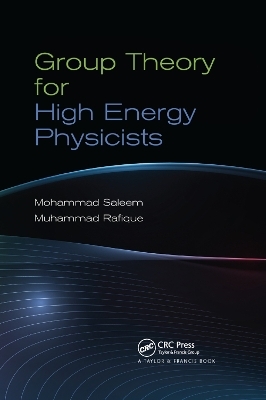
Group Theory for High Energy Physicists
Seiten
2019
CRC Press (Verlag)
978-0-367-38089-2 (ISBN)
CRC Press (Verlag)
978-0-367-38089-2 (ISBN)
Although group theory has played a significant role in the development of various disciplines of physics, there are few recent books that start from the beginning and then build on to consider applications of group theory from the point of view of high energy physicists. Group Theory for High Energy Physicists fills that role. It presents groups, especially Lie groups, and their characteristics in a way that is easily comprehensible to physicists.
The book first introduces the concept of a group and the characteristics that are imperative for developing group theory as applied to high energy physics. It then describes group representations since matrix representations of a group are often more convenient to deal with than the abstract group itself. With a focus on continuous groups, the text analyzes the root structure of important groups and obtains the weights of various representations of these groups. It also explains how symmetry principles associated with group theoretical techniques can be used to interpret experimental results and make predictions.
This concise, gentle introduction is accessible to undergraduate and graduate students in physics and mathematics as well as researchers in high energy physics. It shows how to apply group theory to solve high energy physics problems.
The book first introduces the concept of a group and the characteristics that are imperative for developing group theory as applied to high energy physics. It then describes group representations since matrix representations of a group are often more convenient to deal with than the abstract group itself. With a focus on continuous groups, the text analyzes the root structure of important groups and obtains the weights of various representations of these groups. It also explains how symmetry principles associated with group theoretical techniques can be used to interpret experimental results and make predictions.
This concise, gentle introduction is accessible to undergraduate and graduate students in physics and mathematics as well as researchers in high energy physics. It shows how to apply group theory to solve high energy physics problems.
Dr. Mohammad Saleem is a professor emeritus at the University of the Punjab and a professor at the Institute for Basic Research in Florida. He has written more than 150 research papers on high energy physics and is an editor of the Hadronic Journal. Dr. Muhammad Rafique was a professor of applied mathematics at University of the Punjab.
Elements of Group Theory. Group Representations. Continuous Groups. Symmetry, Lie Groups, and Physics. Appendices. Index.
| Erscheinungsdatum | 25.09.2019 |
|---|---|
| Verlagsort | London |
| Sprache | englisch |
| Maße | 156 x 234 mm |
| Gewicht | 31 g |
| Themenwelt | Mathematik / Informatik ► Mathematik ► Angewandte Mathematik |
| Naturwissenschaften ► Biologie | |
| Naturwissenschaften ► Physik / Astronomie ► Festkörperphysik | |
| Naturwissenschaften ► Physik / Astronomie ► Hochenergiephysik / Teilchenphysik | |
| ISBN-10 | 0-367-38089-7 / 0367380897 |
| ISBN-13 | 978-0-367-38089-2 / 9780367380892 |
| Zustand | Neuware |
| Haben Sie eine Frage zum Produkt? |
Mehr entdecken
aus dem Bereich
aus dem Bereich
Buch | Softcover (2024)
Springer Vieweg (Verlag)
44,99 €
Anwendungen und Theorie von Funktionen, Distributionen und Tensoren
Buch | Softcover (2023)
De Gruyter Oldenbourg (Verlag)
69,95 €


